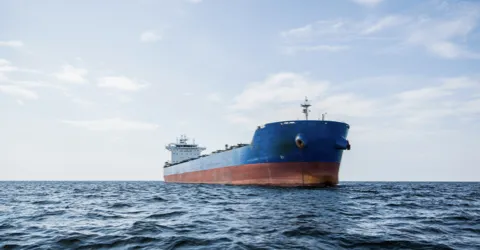IMO Tier III Emission Requirements for NECA Areas
Author: Jeroen Berger • Publication date:
As of January 1, 2016, the IMO Tier III emission requirements have been mandatory within NOx Emission Control Areas (NECAs). This regulation, established by the International Maritime Organization (IMO), ensures a significant reduction in harmful nitrogen oxide (NOx) emissions. As a result, air quality is greatly improved, and the negative impact of maritime shipping on vulnerable coastal regions is substantially reduced. The regulation applies to seagoing vessels longer than 24 meters, with an engine output exceeding 130 kW and a gross tonnage (GT) above 500. Retrofit projects—where existing engines are replaced—are also subject to this regulation.
What Are NECA Areas?
NECA areas (NOx Emission Control Areas) are designated maritime zones where strict international emission standards apply to nitrogen oxide (NOx) emissions from ships. The IMO designated these zones based on their ecological sensitivity, high population density, or exceptional biodiversity value.
NOx is primarily generated during combustion processes, such as those occurring in ship engines. By significantly reducing NOx emissions in these zones, the IMO helps curb air pollution, limit health risks for local communities, and protect sensitive ecosystems from degradation.
Currently, these areas include the coastal zones of North America (United States and Canada) and the Caribbean. Since January 2021, these rules also apply to the North Sea and the Baltic Sea, placing nearly all of Northwestern Europe under these strict emission standards. As further expansion of NECA zones is expected, it is essential for shipowners and shipping companies to prepare strategically for these developments.
IMO Tier III Emission Limits
IMO Tier III requires a substantial NOx reduction—approximately 80% lower than the Tier I standards. The specific limits are defined as follows:
- 3.4 g/kWh for engines with speeds below 130 revolutions per minute (rpm);
- 9·n−0.2 g/kWh for engines with speeds between 130 and 2000 rpm, where n is the actual engine speed;
- 2,0 g/kWh for engines with speeds above 2000 rpm.
These limits significantly reduce harmful ship emissions, resulting in better air quality and fewer health risks for residents and vulnerable ecosystems in coastal areas.
Technologies to Meet IMO Tier III Requirements
Shipowners and shipping companies have access to several innovative technologies to comply with IMO Tier III:
1. LNG-Powered Marine Engines
Liquefied Natural Gas (LNG) engines reduce NOx emissions by 80–90%, minimize particulate matter, and cut CO2 emissions by 20–25% compared to conventional diesel engines. While LNG systems require specialized installations and higher initial investments, they offer substantial long-term benefits such as lower fuel costs, reduced maintenance, and a more environmentally responsible image.
2. Selective Catalytic Reduction (SCR)
SCR technology is especially suitable for vessels running on Marine Diesel Oil (MDO). These systems use urea (also known as AdBlue) to convert harmful NOx in exhaust gases into harmless nitrogen and water. This makes it a straightforward and reliable method to meet IMO Tier III requirements. SCR systems are also relatively easy to retrofit on existing vessels, making them an attractive option for many shipowners.
3. Exhaust Gas Recirculation (EGR)
EGR systems reduce NOx emissions by recirculating a portion of the exhaust gas back into the engine’s combustion chamber. This lowers combustion temperatures, resulting in less NOx formation. Although EGR is effective, it requires regular maintenance and inspections and may slightly increase fuel consumption due to altered combustion efficiency.
Financial and Operational Considerations for IMO Tier III
Strategic emission-reduction decisions are heavily influenced by financial factors. Each technology presents unique costs and advantages that must be carefully assessed.
1. LNG Installations
LNG systems require significant upfront investments, including specialized storage tanks, pipelines, and safety systems. Total costs vary depending on vessel type, size, and system complexity. For seagoing vessels subject to IMO Tier III, additional costs for LNG technology can reach several million euros above standard construction expenses. In special cases—such as large container ships or technically advanced vessels—investment may exceed €10 million.
While initial costs are high, they can be partially offset over time depending on fuel consumption, routes, and operational deployment. LNG prices have fluctuated significantly in recent years, which can affect the cost advantage over conventional fuels. Still, LNG may prove financially viable in specific cases, particularly when combined with subsidies, tax incentives, and lower emission-related expenses. LNG-powered engines also typically require less maintenance and offer environmental and compliance advantages.
2. SCR Installations
SCR is a proven technology that effectively reduces NOx emissions to IMO Tier III levels. These systems are usually more affordable and easier to integrate than LNG installations, making them particularly appealing for retrofit applications on vessels using MDO.
SCR systems use urea to convert NOx into nitrogen and water, but they involve ongoing operating costs. Depending on engine power, sailing intensity, and NECA zone usage, annual urea costs for an average cargo vessel can reach tens of thousands of euros. Routine refilling and logistical coordination are also required.
With strategic SCR deployment, efficient routing, and optimized engine load, these costs can be significantly reduced. SCR systems are also relatively low-maintenance and consistently effective under varying operating conditions, making them a future-proof solution for many shipowners.
3. EGR Systems
EGR reduces NOx by returning part of the exhaust to the combustion chamber, lowering temperatures and limiting NOx formation. These systems are generally simpler and less expensive than LNG solutions, making them ideal for vessels with limited space or investment budgets.
However, fuel consumption tends to increase slightly—typically 1–3%—depending on engine load and vessel operations. EGR systems also require additional maintenance, including inspections, filter cleaning, and removal of soot or sulfur deposits. These activities incur annual costs and must be carefully planned to avoid downtime.
Although less complex than SCR or LNG, EGR’s higher operational demands and maintenance requirements must be considered. For shipowners operating within NECA zones who seek a compact solution, EGR—if well-managed—can still be a viable path toward IMO Tier III compliance.
Compliance and Risk of Non-Compliance
Failure to comply with IMO Tier III standards in NECA areas can lead to severe consequences. Shipowners risk hefty fines, operational restrictions such as port or zone bans, and reputational damage within the maritime industry.
Port State Control (PSC) inspections are typically thorough and focus on the proper installation, functionality, and documentation of emission-reduction systems. Ensuring structural and verifiable compliance is therefore essential—through technical certificates, current maintenance logs, and regular system inspections, including SCR or EGR technologies.


